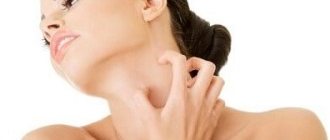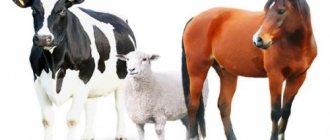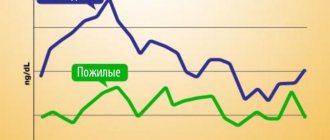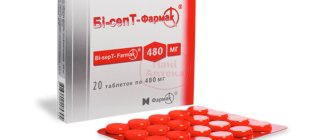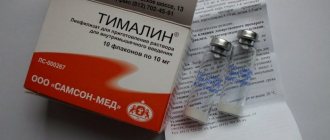Nitroxoline UBF tablets: instructions for use. The most commonly prescribed drug for urinary tract infections is Nitroxoline UBF. The antimicrobial agent is available in tablet form and is intended to suppress pathogenic microflora that provokes an inflammatory process in the genitourinary system. Information about Nitroxoline UBF and instructions for use can be found below.
Nitroxoline UBF is often prescribed for urinary tract infections
Release form and composition
The dosage form of Nitroxoline-UBF is film-coated tablets: biconvex round, yellow or yellow with a greenish tint; the core on the cross section is yellow or gray-yellow in color, a slight green tint is allowed (in a cardboard pack there are 1-3 or 5 contour strip packs of 10 tablets or 1 polymer jar of 25, 30, 40, 50, 60 or 100 tablets).
Composition of 1 tablet:
- active substance: nitroxoline – 50 mg;
- auxiliary components: colloidal silicon dioxide – 3 mg; lactose monohydrate – 22 mg; talc – 3 mg; potato starch – 21 mg; calcium stearate – 1 mg to obtain a tablet of 100 mg (uncoated);
- shell: magnesium hydroxycarbonate – 17.17 mg; sucrose – 78.66 mg; titanium dioxide – 1.27 mg; povidone – 0.93 mg; colloidal silicon dioxide – 1.23 mg; talc – 0.15 mg; yellow quinoline dye – 0.54 mg; wax – 0.5 mg to obtain a tablet weighing 200 mg (with shell).
Danger of overdose
When treating with Nitroxoline UBF, you should take only the doses of medication prescribed by your doctor.
Exceeding them can cause an overdose, which is manifested by the following symptoms:
- nausea;
- vomit;
- dizziness;
- weakness;
- drowsiness;
- chills.
Nitroxoline can be removed from the body by gastric lavage. To normalize the activity of the gastrointestinal tract, enterosorbents are used. Symptomatic therapy is also needed.
Pharmacological properties
Pharmacodynamics
Nitroxoline-UBF is one of the broad-spectrum antimicrobial drugs. Its active component, nitroxoline, selectively inhibits the synthesis of bacterial DNA (deoxyribonucleic acid), forming complexes with metal-containing enzymes of the microbial cell.
Nitroxoline affects gram-positive and gram-negative microorganisms: Staphylococcus spp. (including Staphylococcus aureus), Streptococcus spp. (including Streptococcus pneumoniae, beta-hemolytic streptococci, Enterococcus faecalis), Bacillus spp. (including Bacillus subtilis), Corynebacterium diphtheriae, Proteus spp., Neisseria gonorrhoeae, Enterobacter spp., Escherichia coli, Klebsiella spp., Shigella spp., Salmonella spp.
Shows activity against Mycobacterium tuberculosis, Trichomonas vaginalis, as well as certain types of fungi (including Candida spp., molds, dermatophytes, some of the causative agents of deep mycoses).
Pharmacokinetics
Nitroxoline after oral administration is absorbed from the gastrointestinal tract to a high extent. It is excreted unchanged by the kidneys. A high concentration of the substance (from 100 mg/ml) is observed in the urine.
Composition and pharmacological action
The drug is classified as antibacterial. Its main component is nictroxoline. This substance negatively affects a significant part of bacteria and some types of fungi, preventing their reproduction. Due to this, Nitroxoline UBF is useful in the treatment of infectious diseases.
In addition to the active element, the medicine contains:
- povidone;
- sucrose;
- titanium dioxide;
- talc;
- beeswax;
- paraffin;
- magnesium carbonate;
- aerosil.
The effect of the drug begins with its absorption in the gastrointestinal tract. When taken, a fairly high amount of nitroxoline appears in the body. This substance does not form metabolites and is eliminated in its original form through the kidneys.
Contraindications
Absolute:
- liver failure;
- chronic renal failure (a- and oligonuria);
- cataract;
- neuritis, polyneuritis;
- fructose intolerance, congenital galactose intolerance, Lapp lactase deficiency or glucose-galactose malabsorption syndrome or sucrase-isomaltase deficiency;
- deficiency of glucose-6-phosphate dehydrogenase;
- pregnancy and lactation;
- individual intolerance to the components of the drug, as well as quinoline drugs.
A relative contraindication is renal failure, which is associated with the possibility of cumulation (Nitroxoline-UBF is prescribed under medical supervision).
Contraindications for use
Due to contraindications, taking the drug can cause complications, so you need to make sure there are no complications. These include:
- severe liver pathologies;
- disturbances in the functioning of the kidneys, one of the manifestations of which is anuria or oligonuria;
- neuritis;
- cataract;
- intolerance to the composition;
- pregnancy;
- natural feeding.
Any of the listed features is a reason to select another medicine.
Instructions for use of Nitroxoline-UBF: method and dosage
Nitroxoline-UBF is taken orally, preferably during meals or after meals.
The recommended daily dose for adults is 400 to 800 mg (maximum). The frequency of administration is 3–4 times a day, the intervals between single doses should be 6–8 hours.
The duration of the therapeutic course is 2–3 weeks.
In the treatment of chronic urinary tract infections, Nitroxoline-UBF can be re-prescribed for 2 weeks with a two-week break.
Average daily dose for children (divided into 4 doses):
- 3–5 years: 200 mg;
- from 5 years: 200–400 mg.
A single dose of Nitroxoline-UBF when used for prophylactic purposes is 100 mg, the frequency of administration is 4 times a day, the duration of administration is 2–3 weeks.
Indications for use
This drug should be used for diseases of an infectious nature. The main ones are:
- pyelonephritis;
- urethritis;
- cystitis;
- epididymitis;
- prostate adenoma of infectious origin;
- before cystoscopy or catheterization;
- during operations on the organs of the urinary system and after them.
The drug can be used as a monotherapy, as well as in combination with other drugs.
Reviews from doctors
You can evaluate the effectiveness and safety of any drug by finding out the opinion of experts about it.
Nitroxoline UBF is an effective remedy for the treatment of infectious diseases of both the urinary system and other organs. It is able to fight a large number of bacteria, due to which it can be used in many cases. The drug acts quickly, which is why I often recommend it to my patients for acute infections.
Dmitriy Sergeevich
I rarely use the drug Nitroxoline UBF. This is an effective and fast-acting remedy that can eliminate a variety of infectious diseases. But it has a strong effect on the body, which is why its use is not suitable for every patient. In my practice, there were many cases when a strong negative reaction from the body occurred to this drug, which is why it was necessary not only to select another treatment, but also to eliminate the pathological symptoms.
Irina Anatolyevna
Treatment with Nitroxoline UBF requires caution. When used correctly, this remedy leads to the desired results, relieving the symptoms of the disease and destroying its causative agents. But at the same time, it can provoke various side effects, and its frequent use can affect the body. Therefore, I use this medicine only for acute infectious diseases.
Yulia Viktorovna
Some doctors have a negative attitude towards Nitroxoline UBF, opting for other medications. Others use it extensively for treatment.
Manufacturer
Nitroxoline tablets are familiar to many. They are often prescribed in cases of uncomplicated course of various diseases of the genitourinary system.
This raises the question: what is the difference between “Nitroxoline” and “Nitroxoline UBF”? In this case, the abbreviation UBF means the manufacturer - the Russian OJSC Uralbiopharm. Otherwise, both drugs are similar and have the same amount of active ingredient (nitroxoline).
According to indications and contraindications, these drugs are absolutely identical; the difference may be in the color of the tablet shell (yellow, yellowish, orange), in the appearance of the package and in the number of tablets in it.
As for itself, it has been producing and releasing vital drugs included in the list of the Ministry of Health of the Russian Federation for almost a century. In addition, this OJSC specializes in the production of medicines that are not inferior in quality to foreign analogues, but are much more affordable for Russian citizens.
Side effects
It was noted in rare cases in the central and peripheral nervous systems - headache, ataxia. A single case of optic neuritis associated with taking this drug was also identified, as well as a case of tachycardia. During use of the drug, a change in the color of the patients' urine to dark yellow was noted.
You can learn more about how to quickly cure a headache in the article: headache - types, treatment.
How does Nitroxoline UBF affect microbes?
The drug is antimicrobial, but is not an antibiotic.
The drug is antimicrobial
This is a uroantiseptic that acts directly on the source of inflammation, blocking the activity of bacteria, without affecting the beneficial microflora.
Tablets with the active ingredient nitroxoline relieve inflammation and remove dead microbes along with urine. Along with the inflammatory process, spasm and pain go away.
Indications
When answering the question about what Nitroxoline UBF tablets are for, one should note such pathologies as:
- Infections of the urinary and reproductive systems: cystitis, urethritis, pyelonephritis, inflammation of the epididymis (epididymitis), inflammation of one or two testicles (orchitis), prostatitis, etc.
- Prevention of infections in the postoperative period during surgical procedures (catheterization, operations on the kidneys and genitourinary organs) performed on the urinary tract.
- Infected adenoma (benign tumor) or carcinoma (malignant tumor) of the prostate.
How to take it correctly?
Depending on the severity and nature of the inflammatory disease, the drug is taken 3 to 4 times a day. The single dose for adults is 2 tablets. 50 mg each. At the discretion of the treating specialist, the dosage may be slightly increased.
Patients of school age (from 6 to 12 years) take 1 tablet. up to 4 times a day.
For children under six years of age, the doctor selects the dosage individually.
A uniform time interval must be observed between doses of the drug.
Take the drug with plenty of water. Throughout the entire treatment period, it is necessary to maintain a drinking regime: the patient must drink at least two liters of water per day.
Eating or lack thereof does not in any way affect the effectiveness of the drug, which makes the use of Nitroxoline more convenient.
The manufacturer recommends swallowing the medicine whole without chewing.
Features of application
It is necessary to take into account some features of the patient’s body, which are warned about by the instructions for use attached to the drug “Nitroxoline UBF”, in order to prevent complications of the patient’s condition.
The drug should be taken with caution in case of renal failure (excessive accumulation of the active substance in the body is possible in case of poor excretory capacity of the kidneys).
During treatment, the patient's urine becomes reddish-yellow in color.
Dispensed by prescription.
Adverse reactions from internal organs
A long period of treatment with the drug may lead to unwanted side effects. The patient may experience nausea, vomiting, and loss of appetite.
Sometimes treatment with nitroxoline is accompanied by headaches, motor dysfunction, sensitivity disorder of nerve endings, and damage to peripheral nerves.
Very rarely, the drug can cause tachycardia, and in isolated cases, liver function disorders have been observed.
During treatment, the patient's urine becomes bright orange. After discontinuation of the drug, the natural color returns to normal.
What can replace the drug?
The most popular analogues of “Nitroxoline UBF” are “5-NOK” and “5-Nitrox”. These drugs have a similar composition, in which the main active ingredient is the same nitroxoline. They also have a similar principle of action and the same contraindications.
One of the popular analogues is the drug “5-NOK”
Despite the fact that the only difference between the drugs is the manufacturers, it is up to the specialist to determine which drug to administer.
